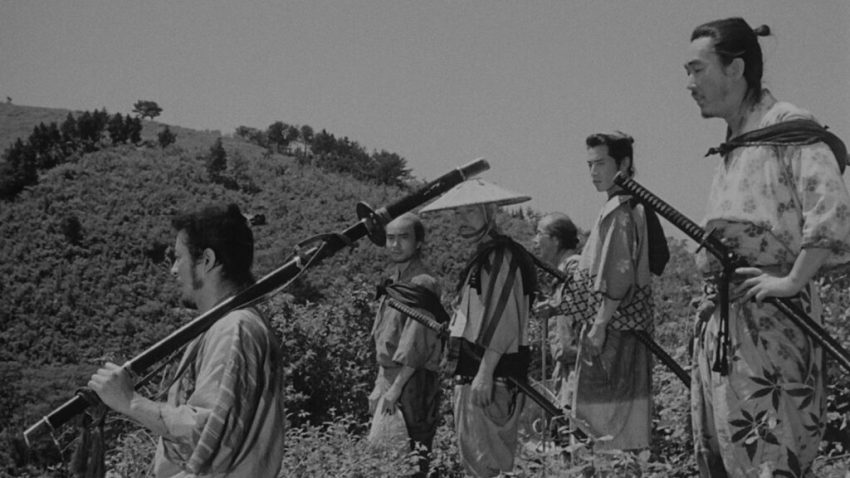mayday2000.org – Seven Samurai (1954), directed by the legendary Akira Kurosawa, is widely regarded as one of the greatest films ever made. This Japanese epic, set in the 16th century, tells the story of a group of seven ronin—masterless samurai—who are hired to protect a poor village from bandits. The film’s combination of exceptional storytelling, compelling characters, and innovative filmmaking techniques revolutionized cinema and continues to influence filmmakers to this day.
Plot Overview: The Struggle of the Defenseless
The plot of Seven Samurai revolves around a village of impoverished farmers who are regularly raided by a group of bandits. Realizing they cannot defend themselves, the villagers hire seven samurai to protect them. The samurai, each with unique skills and personal histories, train the villagers in combat and prepare for the inevitable battle. What follows is not just a fight for survival but a deep exploration of human nature, loyalty, sacrifice, and honor.
The central themes of the film explore the dichotomy between the samurai’s code of honor and the harsh realities of war and survival. The tension between idealism and pragmatism is brought to life through the characters’ interactions, making it more than just a traditional action film.
Character Depth and Development
The strength of Seven Samurai lies in its rich character development. Unlike typical heroic figures, Kurosawa presents the samurai as complex individuals, each with their strengths and flaws. The leader of the group, Kambei (played by Takashi Shimura), is a seasoned and wise samurai who values strategy over brute force. Meanwhile, characters like Kikuchiyo (played by Toshiro Mifune), an impetuous and brash samurai, add depth and emotional complexity to the narrative.
Each character represents different aspects of the samurai ethos, from the stoic and disciplined to the hot-headed and impulsive, but they all share a deep sense of duty and honor. The farmers, too, are not portrayed as mere victims; they undergo their own transformation, evolving from frightened peasants to brave participants in the fight for survival.
Cinematic Innovation and Techniques
Seven Samurai is a milestone in cinematic innovation. Kurosawa’s direction, along with his collaboration with cinematographer Asakazu Nakai, introduced techniques that would later become staples in filmmaking. The film’s use of telephoto lenses to compress space and intensify the action, its dynamic framing and composition, and the innovative editing—particularly in the climactic battle scenes—are groundbreaking.
The film also made use of a multi-layered narrative structure, focusing not only on the battle itself but also on the emotional journeys of both the samurai and the villagers. Kurosawa’s use of weather to symbolize emotional tension, such as the rain-soaked final battle, became a hallmark of his storytelling style.
Legacy: A Lasting Influence
The impact of Seven Samurai on global cinema cannot be overstated. The film’s influence is evident in countless Western films, particularly The Magnificent Seven (1960), which is a direct adaptation of Kurosawa’s story. The film also inspired directors like Sergio Leone, whose The Good, the Bad, and the Ugly (1966) borrowed many of the same themes, including the ragtag group of individuals working together for a common cause.
In addition to its influence on other filmmakers, Seven Samurai also contributed to the global recognition of Japanese cinema. The film showcased the depth and complexity of Japanese storytelling and helped pave the way for a new wave of international filmmakers to experiment with cinematic form.
Conclusion: A Film for the Ages
More than six decades after its release, Seven Samurai continues to captivate audiences with its timeless themes and masterful filmmaking. Kurosawa’s epic is not just a tale of samurai warriors, but a poignant commentary on the human condition, making it an enduring masterpiece in the history of cinema. Its powerful narrative, unforgettable characters, and innovative techniques ensure that Seven Samurai remains as relevant today as it was when it first premiered in 1954.

